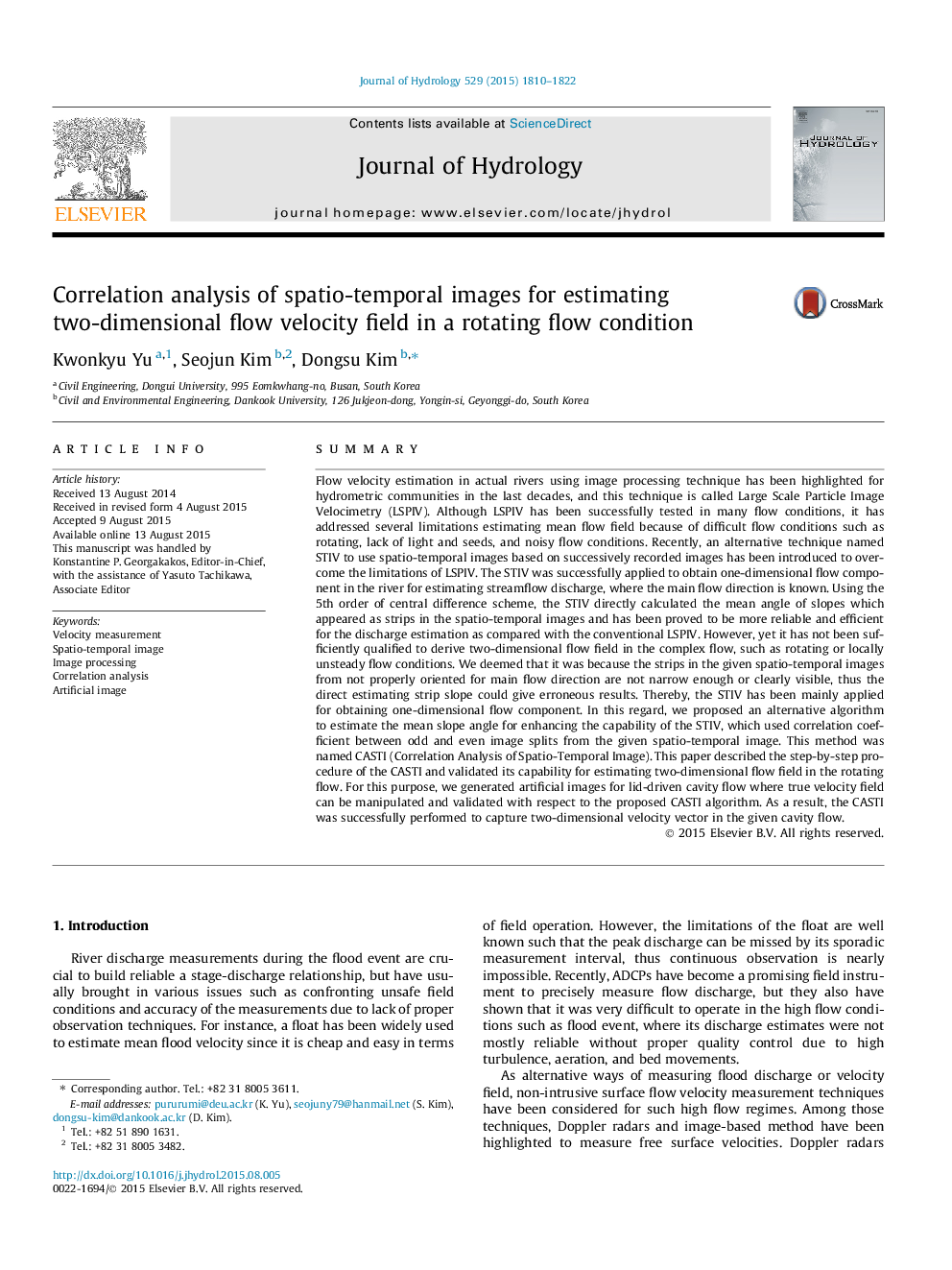| کد مقاله | کد نشریه | سال انتشار | مقاله انگلیسی | نسخه تمام متن |
|---|---|---|---|---|
| 6410851 | 1332885 | 2015 | 13 صفحه PDF | دانلود رایگان |
- STIV utilized spatio-temporal images to obtain 1-D flow, but limited to estimate complicated 2-D flow.
- For enhancing the capability of the STIV, the CASTI was developed to provide 2-D flow.
- The CASTI used correlation coefficient between odd and even image split from the spatio-temporal image.
- For the validation, artificial images for lid-driven cavity flow with known true velocity were created.
- The CASTI was successfully performed to capture 2-D flow in the given cavity flow.
SummaryFlow velocity estimation in actual rivers using image processing technique has been highlighted for hydrometric communities in the last decades, and this technique is called Large Scale Particle Image Velocimetry (LSPIV). Although LSPIV has been successfully tested in many flow conditions, it has addressed several limitations estimating mean flow field because of difficult flow conditions such as rotating, lack of light and seeds, and noisy flow conditions. Recently, an alternative technique named STIV to use spatio-temporal images based on successively recorded images has been introduced to overcome the limitations of LSPIV. The STIV was successfully applied to obtain one-dimensional flow component in the river for estimating streamflow discharge, where the main flow direction is known. Using the 5th order of central difference scheme, the STIV directly calculated the mean angle of slopes which appeared as strips in the spatio-temporal images and has been proved to be more reliable and efficient for the discharge estimation as compared with the conventional LSPIV. However, yet it has not been sufficiently qualified to derive two-dimensional flow field in the complex flow, such as rotating or locally unsteady flow conditions. We deemed that it was because the strips in the given spatio-temporal images from not properly oriented for main flow direction are not narrow enough or clearly visible, thus the direct estimating strip slope could give erroneous results. Thereby, the STIV has been mainly applied for obtaining one-dimensional flow component. In this regard, we proposed an alternative algorithm to estimate the mean slope angle for enhancing the capability of the STIV, which used correlation coefficient between odd and even image splits from the given spatio-temporal image. This method was named CASTI (Correlation Analysis of Spatio-Temporal Image). This paper described the step-by-step procedure of the CASTI and validated its capability for estimating two-dimensional flow field in the rotating flow. For this purpose, we generated artificial images for lid-driven cavity flow where true velocity field can be manipulated and validated with respect to the proposed CASTI algorithm. As a result, the CASTI was successfully performed to capture two-dimensional velocity vector in the given cavity flow.
Journal: Journal of Hydrology - Volume 529, Part 3, October 2015, Pages 1810-1822
